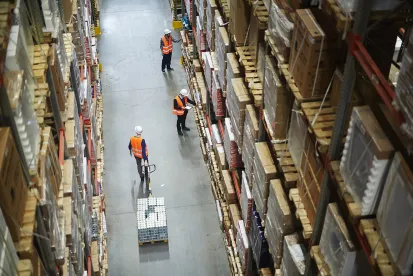Some apparel, fabric and other goods just became more likely to get stuck at the border if U.S. Customs and Border Protection (“CBP”) suspects they contain cotton from Xinjiang or from companies on a recently published U.S. Government list, or otherwise involve forced labor — whether the brand is aware of it or not.
How do you avoid your Fall/Winter collection being held up for weeks, months or forever at the border? Well, we need to start with an explanation of the new law that took effect on June 21, 2022. It is the legal “presumption” under the Uyghur Forced Labor Prevention Act, Pub. L. No. 117-78, 135 Stat. 1525 (2021) (“UFLPA”). This is a rebuttable presumption that goods mined, produced, or manufactured wholly or in part in Xinjiang or by an entity on the UFLPA Entity List are prohibited from U.S. importation under 19 U.S.C. § 1307. The firms placed on the Entity List as of now are listed on pages 22 to 25 of the Strategy to Prevent the Importation of Goods Mined, Produced, or Manufactured with Forced Labor in the People’s Republic of China (“Strategy”), which was published on June 17, 2022 by the Department of Homeland Security on behalf of the Forced Labor Enforcement Task Force (“FLETF”).
CBP has made it clear in its public statements about the UFLPA that there is no de minimis rule, and “wholly or in part” will be applied literally. The expansive scope is also clear from what the FLETF Strategy demands of importers:
To conduct a forced labor risk assessment, importers must map supply chains for their imported goods and then identify steps at risk of using forced labor.
In making a forced labor risk assessment, factors to consider include, but are not limited to:
-
Origin of imported goods and any raw materials or components in the imported good;
-
Transactions among entities along the supply chain tied to the specific imported goods;
-
Locations and identities of entities in the supply chain;
-
Business relationships among entities in the supply chain;
-
Use of publicly available datasets to estimate probability that raw materials or components originated in Xinjiang (when there are indications that raw materials or components do not originate from the stated location, such as inputs from countries that are known to lack production capacity that matches its output volume, additional due diligence is needed); and
-
Indications that a supplier at any tier of the supply chain is using detainee or ex-detainee labor or is receiving workers from Xinjiang through PRC government-labor programs.
Strategy, at 42-43 (emphasis added).
The fashion and apparel industry has a long history of focusing on social responsibility and working conditions in apparel manufacturing, but this has typically involved the supply chain and factories with which fashion companies have contracted to produce goods. The rigor with which the UFLPA forces companies to search at remote levels up the supply chain bears more resemblance to the effort years ago to trace conflict minerals up the supply chain in the electronics sector, which resulted in the Conflict Mineral-Free Sourcing Initiative’s white list of smelters and refiners that industry could use to comply with their due diligence and reporting obligations. Some service companies with global databases of suppliers and supply chains have already begun offering risk assessment reports for U.S. importers under the UFLPA which they say will make use of vast datasets and artificial intelligence to reduce UFLPA risks.
Under the UFLPA, one of the goods targeted as a priority for enforcement is cotton. It was even named explicitly in section 2(d)(2)(B)(viii) of the UFLPA text. Companies sourcing cloth or apparel from China that contain cotton need to be especially vigilant. But it is not just China. CBP has made it clear that it will also target goods from other countries if it believes they have content from Xinjiang or companies on the Entity list, or otherwise involve forced labor.
With the UFLPA presumption now in force, industry is watching to see what CBP actually does at the border. CBP published its own U.S. Customs and Border Protection Operational Guidance For Importers (”CBP Guidance”) on June 13, 2022 and has conducted three webinars to give guidance to importers.
If CBP has information suggesting that goods have content from Xinjiang, or from companies on the Entity List, or otherwise involve forced labor, CBP will do one of three things at import: Detention, Exclusion or Seizure. CBP has also said that it may require redelivery of goods already cleared for entry within the preceding 30 days if it obtains such information after entry.
Unless and until CBP actually seizes the goods, the importer is free to re-export them to another country.
After a detention, if the importer produces evidence substantiating that “the imported goods and their inputs are sourced completely from outside Xinjiang and have no connection to entities on the UFLPA Entity List,” CBP will allow the goods to enter assuming they are otherwise in compliance with U.S. law. CBP Guidance at 17.
In a case where the importer does not refute the Xinjiang or Entity List connection but establishes by “clear and convincing” evidence that forced labor was not used, then CBP will grant an exception and allow the goods to enter. “Clear and convincing evidence” is, needless to say, a heavy burden to meet, and much will depend upon how reasonably and fairly CBP applies the test. When CBP finds an importer’s evidence satisfactory and allows goods to enter, it will “make available to the public a report identifying the good and the evidence considered in granting the exception.” CBP Guidance at 10.
The CBP Guidance indicates that companies should obtain an “independent verification” of the implementation and effectiveness of their due diligence system and should report their performance with respect to due diligence to the public. Id. at 14. This implies a need to have counsel or consultants independently review a company’s due diligence. Some fashion companies have used the services of certified suppliers which comply with the Global Organic Textile Standard (“GOTS”). One is reminded again of the experience with independent reviews in the conflict minerals setting.
By interpreting the UFLPA to require tracing all the way up the supply chain, the Strategy and CBP Guidance come into conflict with China’s Anti-Foreign Sanctions Law, whose Article 12(1) provides that “Any organisation and individual shall not implement or assist in the implementation of discriminatory restrictive measures taken by any foreign country against any Chinese citizen or organisation.” We expect the difficulty of gathering evidence up supply chains in China under the UFLPA to be compounded greatly by this blocking statute.
In the case of conflict minerals, industry was able to develop very useful tools to aid in verifying that supply chains were compliant. One hopes that in time similar tools may become available in apparel and other priority sectors under the UFLPA.



 />i
/>i

